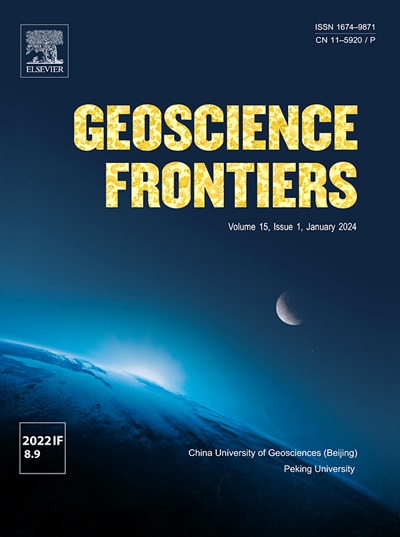The net warming effect of clouds on global surface temperature may be weakening or even disappearing
IF 8.9
1区 地球科学
Q1 GEOSCIENCES, MULTIDISCIPLINARY
引用次数: 0
Abstract
Climate change is significantly influenced by both clouds and Earth’s surface temperature (EST). While numerous studies have investigated clouds and EST separately, the extent of clouds’ impact on EST remains unclear. Based on the inspiration and limitation of cloud radiative effect (CRE), this study provides a pioneering attempt to propose a novel indicator, cloud radiative effect on surface temperature (CREST), aiming to quantify how clouds affect EST globally while also analyzing the physical mechanism. Using reanalysis and remotely sensed data, a phased machine learning scheme in combination of surface energy balance theory is proposed to estimate EST under all-sky and hypothetical clear-sky conditions in stages, thereby estimating the newly defined CREST by subtracting the hypothetical clear-sky EST from the all-sky EST. The inter-annual experiments reveal the significant spatial heterogeneity in CREST across land, ocean, and ice/snow regions. As a global offset of the heterogeneity, clouds exhibit a net warming effect on global surface temperature on an annual scale (e.g., 0.26 K in 1981), despite their ability to block sunlight. However, the net warming effect has gradually weakened to nearly zero over the past four decades (e.g., only 0.06 K in 2021), and it’s even possible to transform into a cooling effect, which might be good news for mitigating the global warming.

云对全球地表温度的净变暖效应可能正在减弱甚至消失
气候变化受云和地表温度(EST)的显著影响。虽然有许多研究分别调查了云和EST,但云对EST的影响程度仍不清楚。基于云辐射效应(CRE)的启发和局限性,本研究开创性地提出了一个新的指标——云辐射对地表温度的影响(CREST),旨在量化云如何在全球范围内影响EST,并分析其物理机制。利用再分析和遥感数据,结合地表能量平衡理论,提出了一种分阶段估计全天和假设晴空条件下EST的机器学习方案,从而通过从全天EST中减去假设晴空EST来估计新定义的CREST。年际实验表明,CREST在陆地、海洋和冰雪地区具有显著的空间异质性。作为对非均质性的全球抵消,云在年尺度上对全球地表温度表现出净变暖效应(例如,1981年为0.26 K),尽管它们有阻挡阳光的能力。然而,在过去的四十年里,净变暖效应逐渐减弱到接近于零(例如,2021年仅为0.06 K),甚至有可能转变为冷却效应,这对减缓全球变暖可能是好消息。
本文章由计算机程序翻译,如有差异,请以英文原文为准。
求助全文
约1分钟内获得全文
求助全文
来源期刊

Geoscience frontiers
Earth and Planetary Sciences-General Earth and Planetary Sciences
CiteScore
17.80
自引率
3.40%
发文量
147
审稿时长
35 days
期刊介绍:
Geoscience Frontiers (GSF) is the Journal of China University of Geosciences (Beijing) and Peking University. It publishes peer-reviewed research articles and reviews in interdisciplinary fields of Earth and Planetary Sciences. GSF covers various research areas including petrology and geochemistry, lithospheric architecture and mantle dynamics, global tectonics, economic geology and fuel exploration, geophysics, stratigraphy and paleontology, environmental and engineering geology, astrogeology, and the nexus of resources-energy-emissions-climate under Sustainable Development Goals. The journal aims to bridge innovative, provocative, and challenging concepts and models in these fields, providing insights on correlations and evolution.
 求助内容:
求助内容: 应助结果提醒方式:
应助结果提醒方式:


